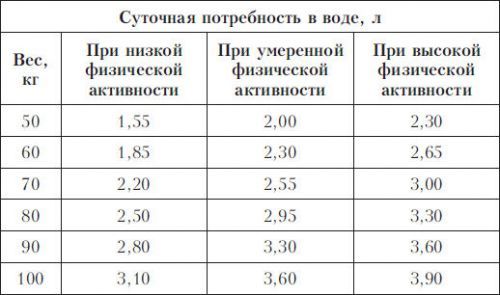Urine is one of the most important biological fluids of the body, through it is possible to draw important conclusions about the functioning of the urinary system and body as a whole. It is for this reason that such great importance has diuresis, in particular, daily.
The daily urine is the amount of urine that a person takes over the day. The normal daily urine output is about 70 percent of the fluid that the person has consumed during the day.
It should be noted that daily urine output is normal is a concept, depending on age, weight. Naturally, it will be different in adults and children.
What it depends on the daily urine
There are factors that affect the numbers of daily diuresis. This amount of fluid intake, age, weight, temperature and ambient humidity, intensity of physical activity, composition of food. Daily diuresis in children also differs significantly depending on their age.
The types of daily diuresis
The daily urine can be divided into night and day. The second prevails in a healthy person over the first. If not, the pathology is called nocturia.

The urine output is isolated:
- polyuria (urine volume derived more than three liters);
- oliguria (urine allocated 500 ml or less);
- anuria (urine flow is not more than 50 ml per day).

The amount of urine depends on fluid intake
In addition to quantitative indicators, and qualitative indicators of urine composition.
On the basis of concentration of secreted osmotically active substances are distinguished:
- osmotic diuresis (urine many displays that contain many active substances);
- water diuresis (not enough active substances and a lot of urine);
- antidiuresis (many osmoticeskih substances and a little urine).
How to determine
Determining daily diuresis is necessary in order to understand how the system works the urinary. You can calculate it by counting clearance. With this purpose the patient should collect during the day, urine in a special container that has markings for accurate examination. Also, the patient within 24 hours captures all the amount of fluid.
While this figure includes all the components: juice, coffee, and tea. All these data then will be transferred to the doctor. As a rule, the study of diuresis leads to a nephrologist, it calculates the indicator and compares the results with the accepted norm. Night and daytime diuresis (further On) are recorded separately. The study observed normal drinking regime.
The algorithm for determining daily diuresis following:
- cancel diuretics, aspirin three days prior to calculating the metric;
- also don’t use food coloring (carrots, beets, sodas with dyes);
- prior to analysis carefully make hygiene of the external genitalia;
- the first (morning) urine sample is not necessary to consider, it is poured into the toilet;
- a container of urine to be stored in the refrigerator;
- the entire volume of urine collected per day, not necessary in the laboratory, it is enough to piss of the total amount of 200 ml in a separate container, thus fixing the number of daily urine;
- the lab is delivered to the container with the urine, it fixed the start time of urine collection and the end, the total volume of biological fluid, height, weight and age of the patient.
The nuances of urine collection for estimation of daily amount will tell the doctor
What are the numbers?
Daily diuresis in norm is estimated according to special tables, they are valid values of the water balance daily. In the process of assessment is needed for these indicators:
- the total number of the derived urine in 24 hours (men are from one to two liters, women – from one to five, and children under one year – not more than one litre);
- the value of hourly.
- the density, color of urine, also consider how it is transparent;
- the absence or the presence of hemoglobin (in norm it is not found in urine);
- sugar (in norm no more than 1.6 mmol per liter per day);
- The Ph of this fluid;
- protein or daily proteinuria (not more than 0,07-0,23 24 hours);
- creatinine (5,3-17 for women, 7-19 for the male population);
- urea (normal values 250-560 mmol).
For children the limit of the rules are a little different, they are in direct proportion to their age.
The daily urine in children
If the average daily urine output in adults varies within the boundaries from one to two liters, the normal indicators of child will be as follows:
- to a year – 320-590 ml;
- from one year to three years – 750-810;
- three to five – 890-1060;
- five to seven –1060-1310;
- seven to nine –1230-1510;
- from nine to eleven –1510-1660;
- from eleven to thirteen –1590-1900.
Acceptable small deviations of these numbers, the average value of the norm.

There is a formula that helps to determine the desired rate of children under the age of ten years – 600+100(n-1), n is the number of years of a child’s life
Average daily urine output year-old child – 450 ml., the Increase or decrease of numbers, taken as the norm, is about to visit a doctor.
Features in pregnant
As you know, during the carrying a child there was the reorganization of all systems in the mother’s body, he is now working for two. The rate of the daily on pregnant women is 60-80 per cent of the liquid, which she drank in 24 hours.
A very large part of body weight pregnant gaining at the expense of the liquid, because the greatly increased blood volume, also the water necessary for the formation of amniotic fluid around the fetus. Typically, a woman during this period drinks a lot. For this and several reasons the amount of urine increases, increasing the number of trips to the toilet.
The normal daily urine output is in the period from liters to 2, as can be seen, it does not radically differ from that of other women. Usually a measure of the amount of urine in 24 hours is increasing after 22 weeks because in this period the child reaches a decent size and presses on the bladder.
To disrupt the normal values for this important indicator can stress, exercise, and various diseases (preeclampsia, pyelonephritis, diabetes, cardiac and renal pathology). Any deviation in the mother’s body affects the child that is why pregnant you need to accurately monitor their condition.
Measurement of daily diuresis is very important. Despite the development of modern medicine, this method remains valid.



